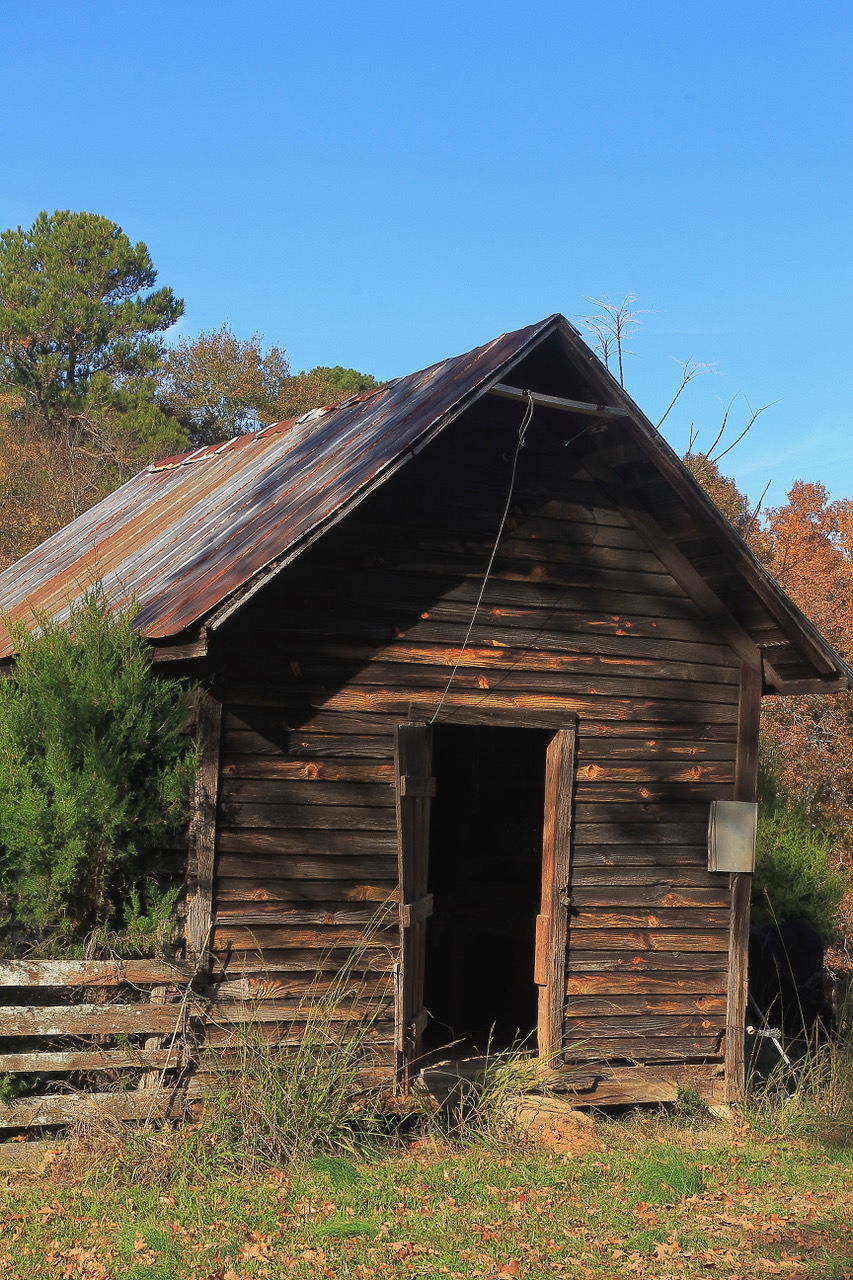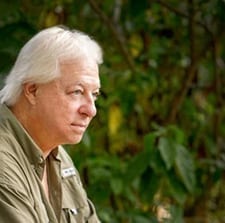Remembering Smokehouses
January 20, 2022By Tom Poland
I wrote about old hand-dug wells not long ago. Many old wells had a companion nearby, smokehouses. I’ve written about these farm icons before, but a good topic always deserves more coverage. Smokehouses live in lore as fragrant places from which “came the sweetest smoke a man was ever to smell.” The late Harry Crews wrote that as he recalled his Uncle Alton’s smokehouse deep in South Georgia, down Bacon County way.
On many of my back-road expeditions I keep my eyes peeled as folks once said. I look for smokehouses. I’ve come across six in the last five years or so. Two stood on an abandoned farm, one was back home on a farm no longer active, the other one, back home, continues to be active. Another smokehouse stood on a historic farm community, and one “rich-man’s smokehouse” stood on Hobcaw Barony, the estate of Bernard Baruch, adviser to U.S. Presidents Woodrow Wilson and Franklin D. Roosevelt. Whether fancy or simplistic, all smokehouses provided families good meals before refrigeration brought wholesale change to food’s preservation.

“The best hams in the world came from that smokehouse.” —A relative.
They’re still out there, though I know no one who smokes meat anymore. But it was a rite of life for a long time. Men slaughtered pigs in winter just as they planted in spring and harvested crops come autumn, and the old folks cured meat in two steps. First, they packed it in salt, which drew water from the meat. Dried meat lasts longer. (Cowboys and Indians ate jerky, dried beef or buffalo.) Then they hung the salted meat in a smokehouse and set a fire meant to smolder. The smoking went on for days or weeks, depending on what you were preserving. Then they let the meat age.
Your typical smokehouse was a small building with a sturdy door, no windows and a roof designed to vent smoke just so. Lots of places existed to hang meat: nails, hooks, beams of course, and wooden pegs. Most smokehouses had dirt floors. Some had bricked floors. Many times you placed the smokehouse a convenient distance from the kitchen. “Boy, go fetch me that ham hanging from the beam.”
Things change but remain the same unfortunately. I came across this: In earlier times people slept in unlocked houses. Their smokehouses, however, featured stout doors with locks and bolts for good reason. In the deep of night, in the “hour of the wolf, that time between night and dawn when most people die, the hour when deepest fears haunt the sleepless, when ghosts and demons rage,” devils would steal the meat you had worked so hard to preserve. The quoted line comes from an Ingmar Bergman film and it seems fitting. Wolves stealing another man’s food. And what about today? Who dares sleep with their door unlocked in this most ungracious age. And you better keep an eye on your mailbox and packages too. Wolves prowl the streets.
Disappointing societal changes aside, I find solace in the past. And so I remember smokehouses with warm affection. Granddad Walker’s smokehouse sat just beyond his hand-dug well. It was dark in appearance, inside and out, and the fragrances seeping from it fired up ham biscuit cravings. Shafts of light slanted from the roof and motes of dust sparkled like stars in the night sky as constellations of hams hung in the darkness.
Whenever I was visiting my grandparents and that smokehouse was open, I stuck my head inside. Harry Crews was right as rain. From it “came the sweetest smoke a man was ever to smell,” and on those momentous occasions when I sat down to a meal of smoke-cured ham, biscuits and honey, and grits and gravy, I assure you, life was deliciously good.















